Ever since humans discovered fire, we have used it to warm ourselves, feed ourselves, and pierce the darkness. Fire is synonymous with our creativity, and is the basis of our technologies. But we also power its destructive force with fossil fuels, leading to mega-fires and irreversible global warming.
For my father, Pepe Zárate, master carpenter
In Bolivia it is rare to meet a forest firefighter who does not have a good-sized ball of coca leaves, bolo de coca, concealed under one side of his tongue. You will see that, in the middle of fighting a fire, he always has a small bag to hand from which he takes five or six dry leaves and stuffs them in his cheek with a pinch of bicarbonate, so that the plant’s juices release their energy. The result is an ever-growing greenish ball: when the fires burn longer and the body threatens to give up, the firefighters add more leaves, puffing out their cheeks to the point where they can hardly be understood when they speak. Some of them chew coca leaves “the old-fashioned way, using the pure dried leaf only.” Others, more sophisticated, consume coca crushed with mint flavoring, banana, mango, passion fruit, chewing gum, Nescafé, Coca-Cola “and all the flavors you can imagine.” Chewing coca enables them to withstand 18 or even 24 hours straight of physical labor, almost without water or food, focussing only on extinguishing the wildfire.
It is October 1, 2022 and the Plurinational State of Bolivia is celebrating Arbor Day. But this volunteer fire department is in no mood to celebrate. They have been barricaded in their tents for 23 days and nights, trying to save what is left of a timber forest and prevent the flames from touching the houses of Santa Mónica, an indigenous community of some 35 families, in the province of Concepcion, north of the Chiquitano dry forests: with 24 million hectares (84% of them in Bolivia), it is the largest tropical dry forest on the planet.
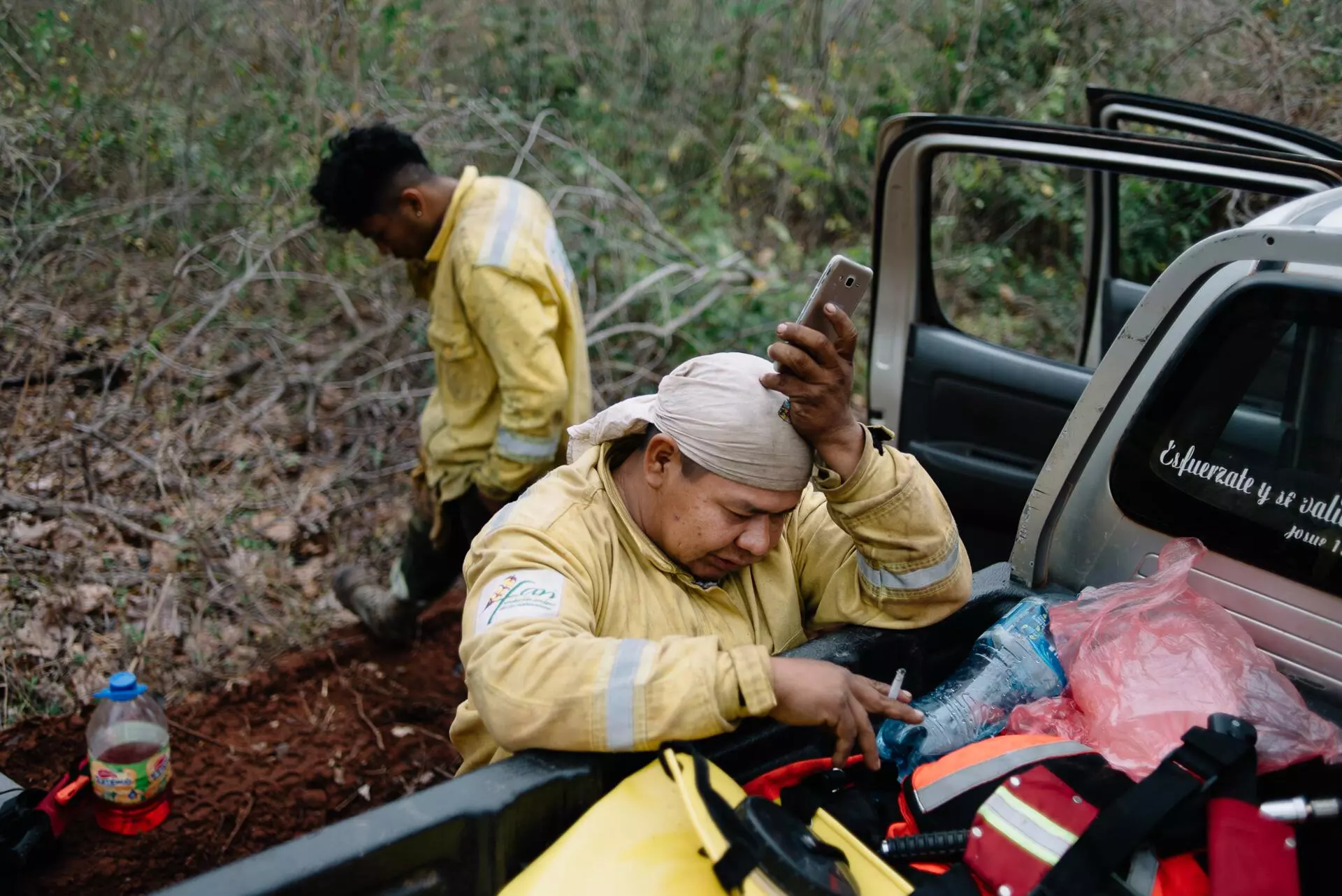
Indigenous volunteers fight fires without appropriate suits, masks or other basic protective equipment.
It is not the most terrible or the most striking fire. But telling this story may help us understand why Bolivia continues to be among the five countries that deforest and destroy its forests the most. In 2019, in the midst of the crisis of Evo Morales’ government, the fires in the Amazon made headlines in the international press: six million hectares (4% of the Andean country’s surface) were razed to the ground by land clearing or burning in Santa Cruz de la Sierra, the main cattle-raising department. Shortly afterwards, in 2020 and 2021, in the same region, the same type of fire (mega-fires or sixth generation fires whose heat and smoke emissions can modify microclimates) consumed as much forest as 100 cities the size of New York, the territory of some 400 communities.
Santa Mónica is one of so many places in Bolivia that are burning again.
While in neighboring towns at least a few light showers are falling, the neighbors here swear that not a single drop has come from the sky in three months. And now, as the sun turns red from the clouds of smoke all around us, Commander Fabio Poma, a forest firefighter with the Departmental Government of Santa Cruz, checks a satellite map on his phone. On the green graphic, which is updated from time to time with new weather data, orange dots (‘burning hotspots’) are visible surrounding Santa Mónica, like a snake of fire, curled around its prey.
“We have to kill it once and for all,” warns Poma, a stocky 34-year-old from Santa Cruz, with close-cropped hair. ‘And right now, otherwise the north wind is going to screw us.’
“Camba by birth, but colla by blood” (his mother is from Cochabamba and his father from Oruro), Commander Poma has been putting out fires in the region for a decade, and knows that only at night, when the temperature drops, can they fight back. There are several fronts that must be opened and, as he has few professional firefighters, he has organized watches with 12-hour shifts. Adults from the community also take part.
“When people are absolutely exhausted, some volunteers don’t want to go to work, so they have their little ball of coca to perk themselves up again.”
Poma does not chew coca or smoke when he is on duty, as “the law prohibits me from consuming any substance,” and he has to take care of his men. So now, in the middle of the night, we drive in the village truck to the intersection of two trails, where a group of community members have been trying for hours to put out the fire with portable water tanks on their backs. Others use chainsaws to cut burning logs and bury the embers that have penetrated the roots of the trees.
Unlike the forest firefighters from more established companies such as Direna (Dirección de Recursos Naturales de Santa Cruz), Funsar (Fundación de Búsqueda y Rescate) or Guardián (with their uniforms, boots and certified backpacks) who are responding to this emergency, the indigenous volunteers are fighting the fire without fireproof suits or face respirators or any other basic equipment to protect them.

On his altar, a volunteer displays religious symbols and family photographs: he thinks the firefighters can stop the fire, ‘but only God can extinguish it with the rain’
“We just came with our shoes and clothes from home,” said Alberto Paine, 45 years old, a bricklayer and resident of Santa Mónica, who had come with his teenage niece to make quicker progress in putting out the fire.
Despite the darkness and the thick smoke, Paine and his neighbors are able to do their work thanks to the tiny lanterns they wear on their foreheads. It is only around midnight that they decide to sit on some fallen tree trunks to watch the flames. Some chew their balls of coca leaves, or light up a cigarette. Others take sips of drugstore alcohol mixed with water as they listen to cumbias by Clímaco Sarmiento on a cell phone. I understand little of what they say because of the balls of coca in their cheeks, but on their ash-smeared faces there are looks of accumulated exhaustion, which neither the coca nor the good news from Comandante Poma can dispel: according to the weather report, rain will fall, finally, in about three days.
No one appears enthusiastic. They know that tomorrow, with the sun beating down on their heads and the north wind blowing a gale, the fire they have just extinguished will rise up again. Further away or closer, it doesn’t matter. They’ll have no choice but to start the work all over again.
***
Some 400,000 years ago —a blink of an eye, viewed on a geological scale— the first humans domesticated fire: they learned, among other things, to build fires to keep warm and protected; they learned to cook and gained more calories than by eating raw food; and they began to socialize late into the night, which may have led to the first stories being told about the world we inhabit, and the worlds we imagine.
Myths such as that of the titan Prometheus (whose feat made “every art possessed by man” possible), tell how, once fire had been snatched from the gods, it became the trigger for human rebellion and creativity. Hence, different disciplines of knowledge recognize its power beyond metaphors: fire is at the basis of our technologies —from agriculture to space exploration— and, at the same time, it is perceived today as a destructive force that has gotten out of hand due to the use of fossil fuels, mega-fires and irreversible global warming.
“Propagating ice previously helped push the planet into an ice age; likewise our binge burning is now propelling the Earth into a fire age,” writes Stephen J. Pyne, a professor of environmental history at Arizona State University, an experienced firefighter and author of the precise name for these times: “We have created a Pyrocene. Now we have to live in it.”
Carpenter Juan José Leigue has not read Professor Pyne nor is he up to date with the latest research on the propagation of fire around the world, but he has found a practical way to warn his neighbors of the imminent danger of fires in the area: on the way in to Santa Mónica he has put up a wooden sign warning of the risk of fire in the community. It is a semicircle that, from right to left, goes from green (low risk) through yellow (high risk) to red (extreme risk).
“We are in deep, deep red now,” Leigue, the chief in charge of fire response in Santa Mónica, tells me. “Everything smells like it’s burning. It makes you want to cry, honestly.”
Leigue came to this forest 47 years ago with his grandmother and other men and women with whom he founded Santa Mónica. He was a boy who carried the pots and the family’s only donkey. “It was beautiful back then, green, fresh, super clean air,” the master carpenter recalls, as we walk through the scars left by the fire on the lands of Cachuela, one of more than 200 intercultural communities (with a mainly Aymara or Colla population) that have been settling in the Chiquitanía, to work the lands that the government of Evo Morales has taken back from the big livestock farmers. According to firefighters, this is where the fire originated.
When the fire broke out in Cachuela, Leigue was in Santa Mónica, celebrating a patronal festival. Suddenly, they saw a column of smoke rising a couple of miles away. Nobody was alarmed, until a few days later the flames reached farms and pastures, and the smoke got into the houses.
“It was unbearable, the cloud of smoke blowing from the north and the sky burning with the falling ashes, then the tall trees caught fire, the fire quickly rises, and when it is daytime, with this heat, it is almost impossible to extinguish it.”
Leigue remembers watching helplessly as a wave of fire consumed in a matter of hours dozens of specimens of ajanau, cuchi, momoqui, cedar, tajibo, echiturí and tarara amarilla trees, among other ancestral trees that are the raw material for the tables and chairs that carpenters like him make, to provide for their families.
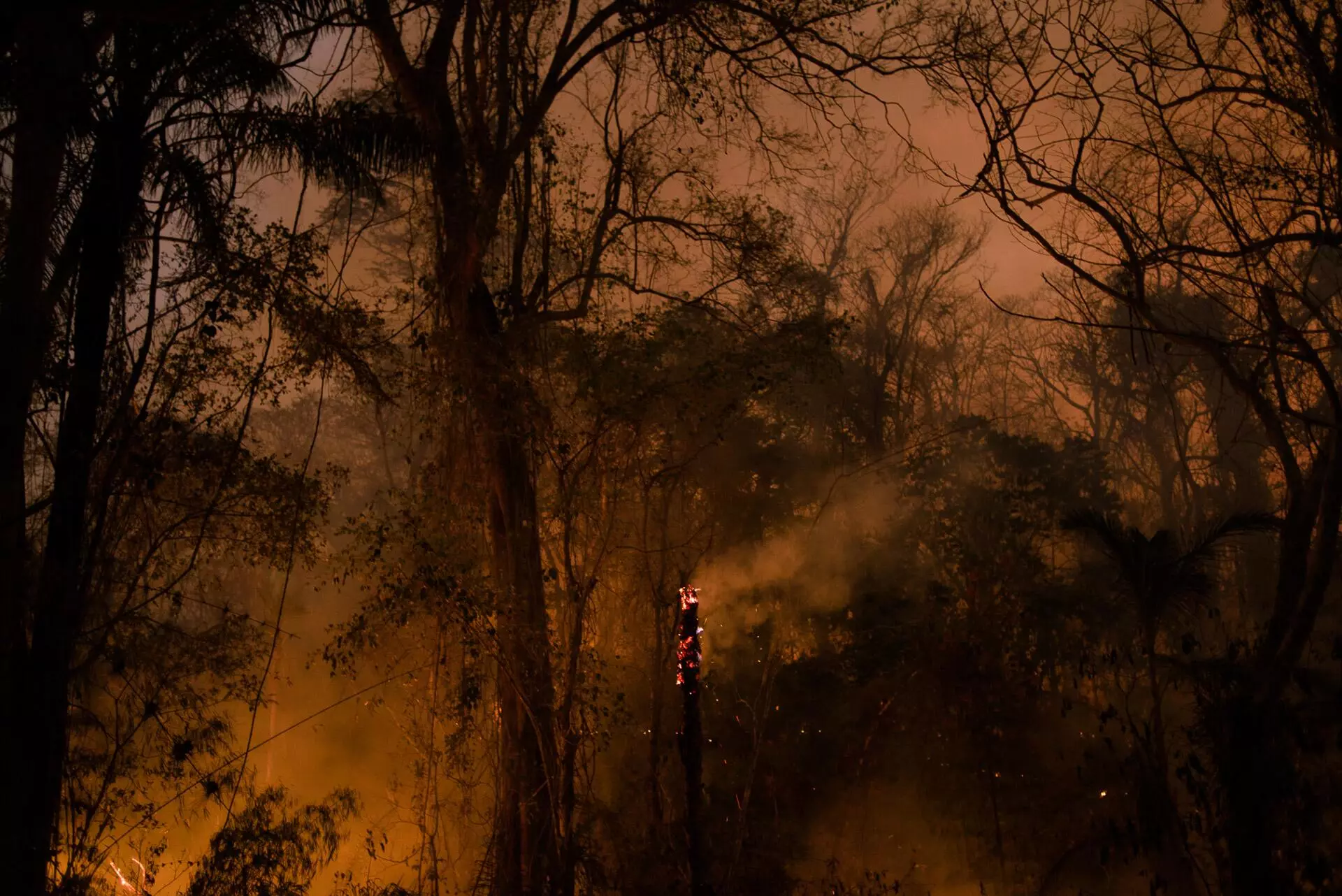
Burnt tree near the community of Santa Mnica in Bolivia. When the fire reaches the tall trees the wind easily disperses the embers and accelerates the spread of the fire
By flying a drone over the road to Cachuela, the post-nuclear landscape could be seen: a sky gray with smoke, grass turned to ashes, squirrels fleeing among the dead trees, charred armadillos and snakes, scars left by the flames.
“There isn’t a single roof that hasn’t been burned,” Carmelo Mercado, 59, with a ball of coca, told me from the hut he looks after. He seemed to be the only inhabitant in the whole community. “But I couldn’t do anything because I was alone and there hasn’t been water here for three weeks. That’s why I’ve only stayed to take care of this house for my boss.”
Depending on who you ask, the reasons that cause a fire in this part of Bolivia can be multiple. The indigenous community members that I interviewed during those days told me that it is the intercultural people who, when they clear land, do not properly measure the strength of the wind and then the fire escapes into the forest. Some say it is hunters who leave their campfires burning, or a reckless smoker who threw a cigarette butt off the road. The intercultural people, on the other hand, accuse the indigenous people of setting fire to the forests to demand some help —food, water, clothes, tools— from the government.
“To be honest, the lack of awareness this year has been widespread: private, indigenous, intercultural,” says forest firefighter Daniel Velásquez, subprefect of the Ñuflo de Cháves province, to which Santa Mónica belongs. “And for that to change, the law must change. Until we change the regulatory part, the sanctioning part, they will carry on burning. Because if not, nobody is guilty of anything.”
Bolivia is the country in the region with the lowest base fine as the main measure against illegal fires and deforestation: while Brazil, also affected by the recent mega-fires, the base fine per hectare illegally burned is 925 dollars, in Bolivia it is 0.2 dollar cents.
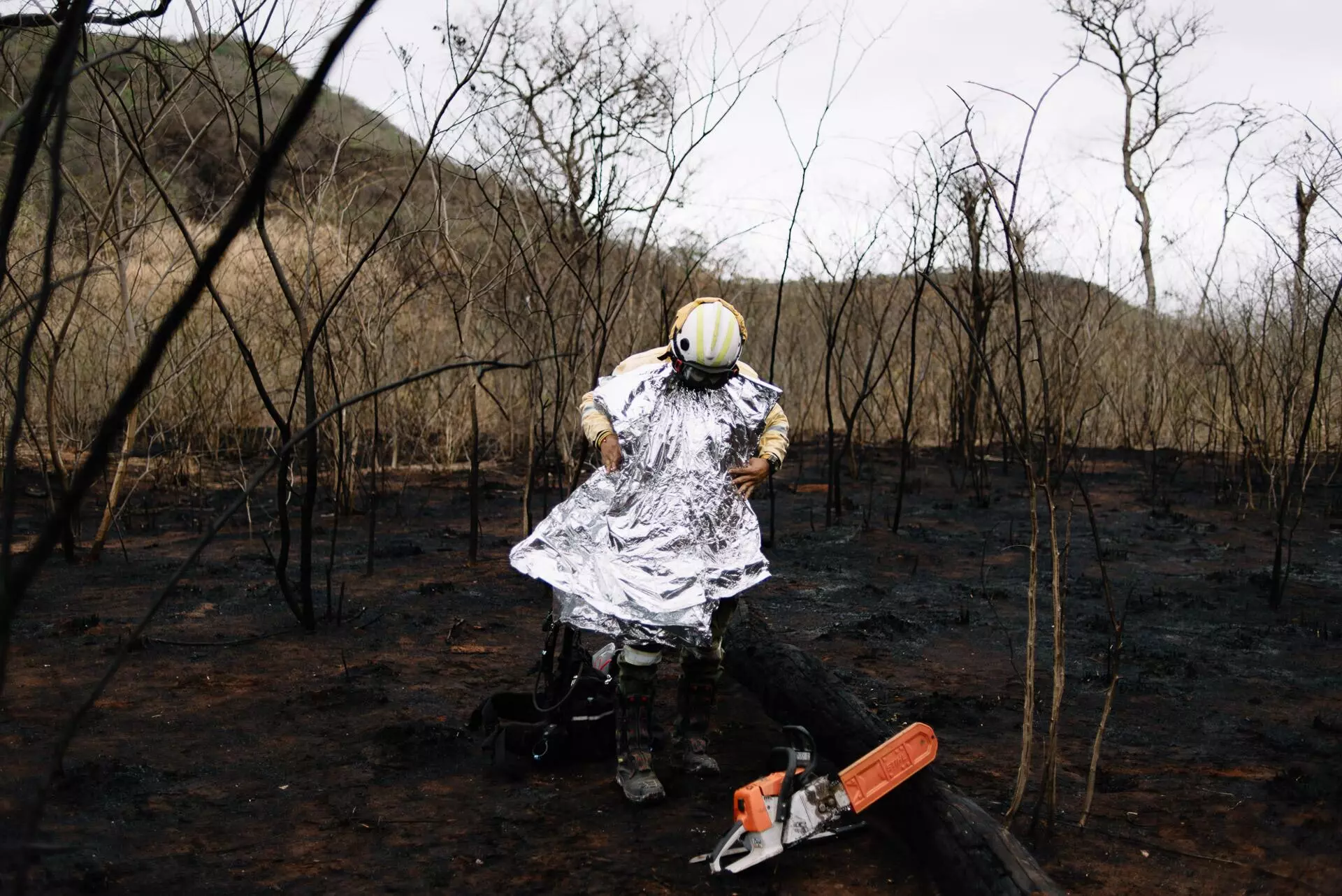
The leader of the volunteer fire brigade accompanied by ‘Colapso’ unwraps a thermal blanket: a risky operation
“It’s an absolute joke!” subprefect Velásquez had told me one afternoon when we went out to monitor the fire in Santa Mónica.
“We are putting it out and these people are setting fires. We are spending money we don’t have, and to be rewarding these imbeciles who set fires is not right. That is why I’ve ordered that none of them get a cent.”
He told me that recently, in Cachuela, he saw a neighbor burning his land. The fire got out of control and they had to go to help him. “We were fighting it for two weeks. We put it out. Again and again. Do you know what happened? He set it on fire again. I almost kicked the shit out of him.”
***
October 5, 2:07 pm. Leaving Cachuela, the source of the fire.
On the dirt road, we pick up a lady with her bags from the market. Her name is Antonia Aricoma. She is from Potosí. She is 60 years old and has four children. She lives in an intercultural community called Villa Hermosa. It starts raining. We chat for a while. The radio is playing a song by Maná.
“Look, young man, we know how to burn. Have we ever burned badly on our lands before? We know how to do it. First we sweep, then we use a saw to fell, it is dried out and we leave the ditch clean. If it gets out of control we put it out with soil and water. Nothing ever happens.
“Round here, they say the intercultural people are to blame for the fires. That they’ve come to take land from those who live in Santa Cruz, from the Cambas.
“We’re here because of Evo. When he was here, he helped a lot. In the altiplano there is almost no land, there is only land for a few. They told me that there was land here and I came six years ago. I wanted my little piece of land, it has been good for me.
“Right now, according to the regulations, it is forbidden to burn. There is no rain. Everything is too dry. But there are still fires.”
“Look, sometimes I feel bad, because everyone pays for one person’s actions. Sometimes, I know that one of my friends has done his land clearing, but he doesn’t want to burn. But someone else lights his cigarette and tosses it away and sets it all on fire. If he were responsible, he’d throw his cigarette butt away and put it out, and nothing would happen. Why would I tell you that it was such-and-such a guy, if that were the case, I would call the Deputy Governor, I have his number.
“And why do you think that in Santa Cruz they say that it’s the intercultural people who burn uncontrollably?
“Rural people, you see, have to find a way to survive. And some people don’t like that. We might not be Chiquitanos or Cambas, but we are still Bolivians. Or are we from another country, because we are Aymaras?”
***
In the language of forest firefighters, fires are often described as wild beasts that are born, grow, reproduce and die. A forest fire has a ‘head’ (the main focus of fire and the largest part), has ‘arms’ and ‘fingers’ that, due to the action of the winds, spread from one side to the other, leave black scars on the earth or carry the burning ashes through the treetops, which makes the voracity of the fire unpredictable. The rule for a forest firefighter is to never underestimate the beast.
Training teaches that the severity of a forest fire depends on the 30-30-30 Factor: if the ambient temperature exceeds 30 degrees Celsius (86 F), the humidity is less than 30%, and the wind speed exceeds 30 kilometers (18 miles) per hour, “we’re really screwed,” Commander Poma warns. Although for him, of all these variables, the most dangerous is the wind.
In the Chiquitanía region, especially in the area of Santa Mónica, there is a ‘bad wind’ and a ‘good wind’. The first one, the North wind, is the one blowing now: it carries and disperses the burning ashes and makes them fall like black rain on the farms and houses of the community. Then there is the South wind, the good one, which rather drives away the flames, and when it blows, it is almost always accompanied by rain. For days now, unfortunately, the South wind has not appeared, and when it does, it is only for a moment, because the North wind immediately defeats it.
But Poma is more afraid of firestorms or sixth-generation fires. These are catastrophic fires that generate pyrocumulus, a type of fire cloud that generates swirling updrafts of hot air, absorbing the earth’s humidity and traveling more than three feet (a meter) per second. As they move quickly, they ignite anything dry and leave the forest red-hot “like molten metal”.
“It’s a monster, like it has a life of its own,” Poma says, “and it can’t be stopped with fire extinguishers, or shovels, or anything else. All you can do is run away.”
“That’s why,” says Poma, “this job is not for the absent-minded, or worse, people with a ‘hero complex’”. He saw plenty of these in 2019, when busloads of young volunteers arrived from the city to the Chiquitanía to ‘help’ or as Poma says, to do ‘disaster tourism’.
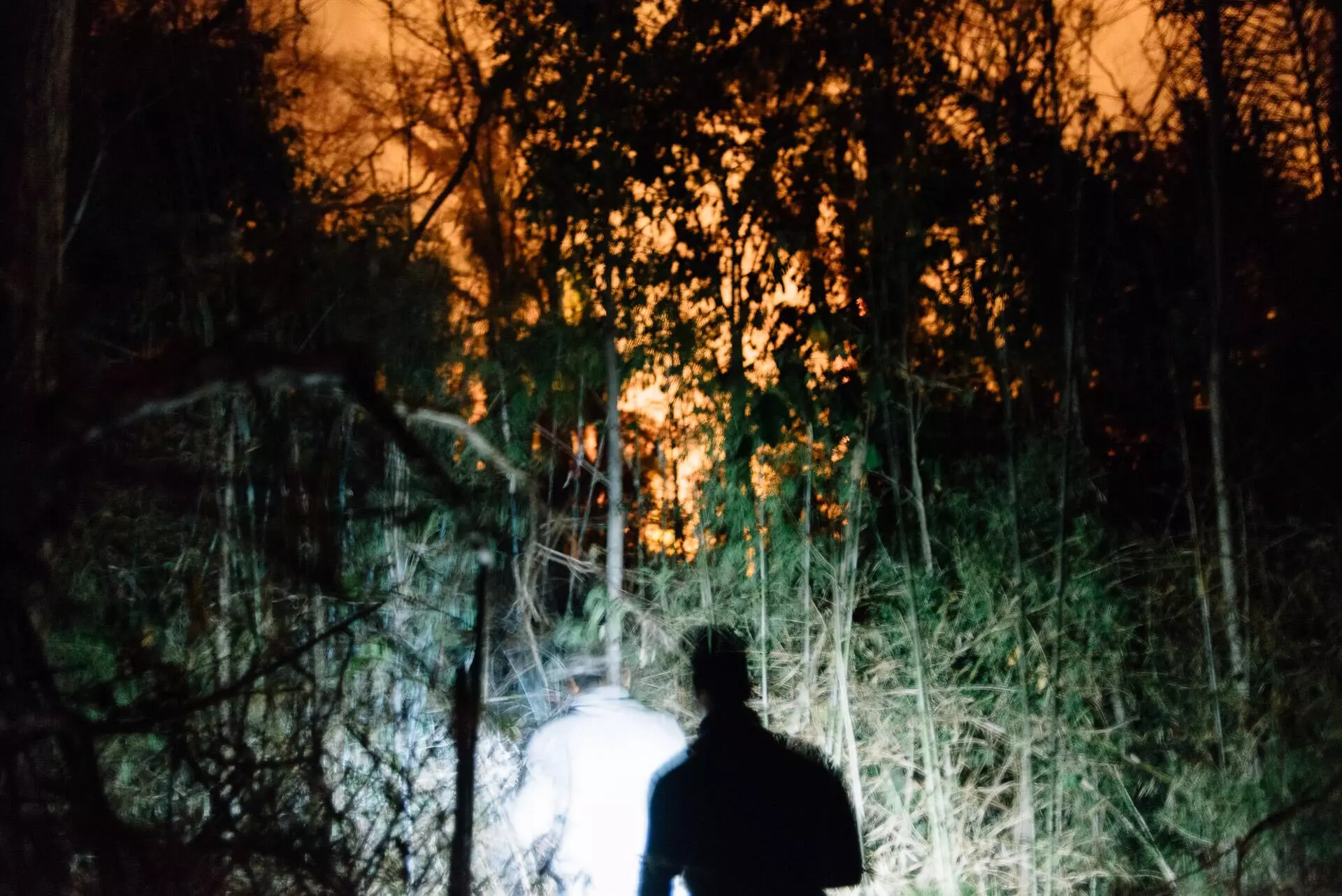
In 2020, Bolivia was the second country in Latin America that cut down and burned the most rainforests for agro-extractivist activities (after Brazil), according to Global Forest Watch
“They arrived in Santa Mónica when we had already been here for a month, in the fire. The police and the army had come and hadn’t been able to do shit. We arrived and found everything a mess, there was no organization, and the ‘volunteers’ had practically taken over the camp. The interesting thing is that when you saw them, their clothes were super clean, their forest backpack intact, they would put out a fire and that was it. Total bullshit.”
Until one day, when Poma arrived with his men after a shift.
“The volunteers had eaten everything at the firemen’s camp, everything. Then I lost it, with all the adrenaline pumping through me, I had been fighting for eight hours with flames 50 feet (20 meters) high, without eating well, without water, so I kicked them all out. And they left. Some of them were half drunk, they had even snuck into the tents, in short, it was total chaos.”
Poma remembers that they were angry, that they criticized him on social media, but he did not care, because there were already records of at least six people dead in the fires and in Santa Monica the situation was so serious that they had to evacuate the children and the elderly in the early hours of the morning to a community house in Concepción.
Since then, like now, only the forest firefighters have stayed in Santa Monica to fight the fire, but without being able to beat it yet. For that they must wait for the low temperatures of the night, or for the rain.
“Or wait for a miracle,” Poma says, which, for him, in these circumstances, is more or less the same thing.
***
They say that the boy’s mistake, the mistake that almost made him easy prey for the jaguar, was to sit with his back to the burning forest. “Never turn your back on fire, son,” his father, a veteran forest firefighter, had instructed him. But the exhaustion of that evening’s work —hacking underbrush, clearing trails, hosing down smoldering logs— made his rookie legs give out. He took off his facial respirator, sat by the side of the path, until his father shouted “Lucas, get the fuck up!” and then he could see how, about 30 feet (10 meters) behind him, the feline’s eyes gleamed in the light of their head torches.
October 7. Day 30 of the fire in Santa Mónica.
The southerly wind blew this morning and has brought a downpour. The flames seem to have retreated, and all is beginning to seem calmer, except for the appearance of the jaguar.
The volunteers had already told me about the big cat the night before. In the middle of the trail they were keeping watch over, they swear they could make out the animal’s prints. Poma has therefore decided to suspend operations in that sector until they catch the feline. This afternoon, the animal rescuers will arrive with their cages.
It is clear to say that fires do not only affect humans. We must also think about the effects on animals and plants at the time of the fire and later, many years later. Animals usually react in two ways to fire: by fleeing or hiding. But the number of animals killed after a fire will be higher.
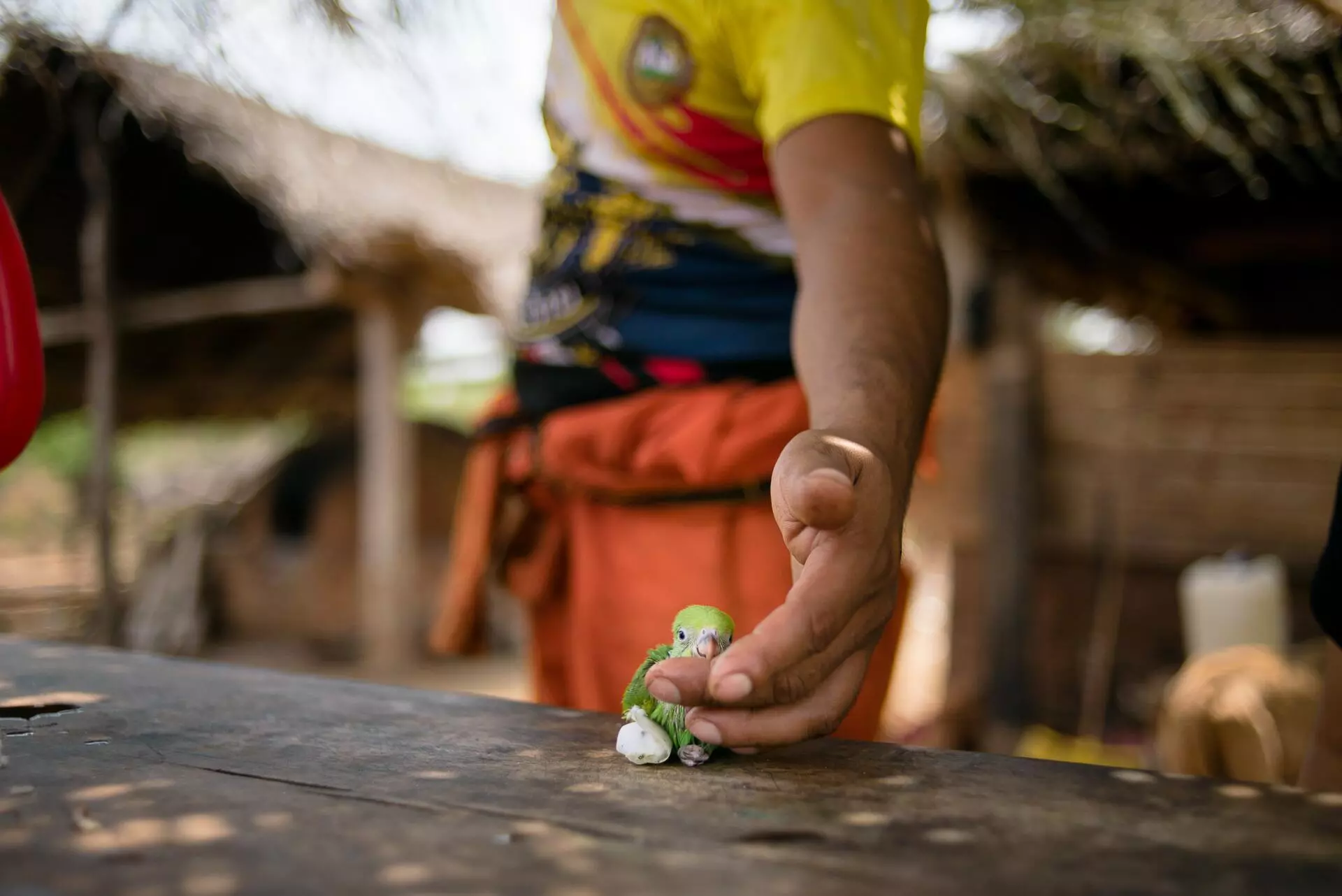
A member of the medical brigade working in Santa Mónica helps a parakeet that was rescued from a fire by a firefighter
In 2019 alone, according to data from the Chiquitano Forest Observatory, 47% of jaguar habitat burned at least once during that year. This is alarming, considering that, in case of fires like these, large animals usually move fast to escape the fire; it is the smaller animals that do not make it.
The Observatory has estimated that, in 2019, the year of the fire, some 5.9 million mammals (some 48 different species, such as banner bears, bush hogs, small felines) were killed as a direct result of the fire. Most of them lived in protected areas, with numbers per species varying from four jaguar individuals to 3.6 million rodents. We are talking about animals that, faced with the danger of the flames, crawl into their burrows or hide by burying themselves under the forest leaves, and can sometimes survive the fire. Some do not make it. It is common to find charred cockroaches and other insects on the burned surface. Certain amphibians and reptiles, especially snakes and lizards, are often a cause for concern: not only because they may die from the fire, but also from the destruction, however temporary, of their habitat and livelihood. Even when they manage to escape, they will have died some time later from starvation, thirst, at the hands of hunters or from competition with other species seeking basically the same thing: water and food.
The day after the jaguar appeared, after making a more detailed inspection, and returning to the part of the trail where they had seen the feline, we saw some tracks: some larger, some medium-sized and some small.
Daddy, mommy and baby jaguar, perhaps. It wasn’t a feline trying to eat the volunteers, the rescuers tell me. It was a family fleeing from the fire, defending their home from strangers: from us.
***
Every year, ExpoCruz goes out with a bang, with a lavish day of celebrations: this Saturday in September, which marks the anniversary of Santa Cruz de la Sierra, the city’s major fair looks like an amusement park for fans of cattle.
Disneyland for livestock farmers.
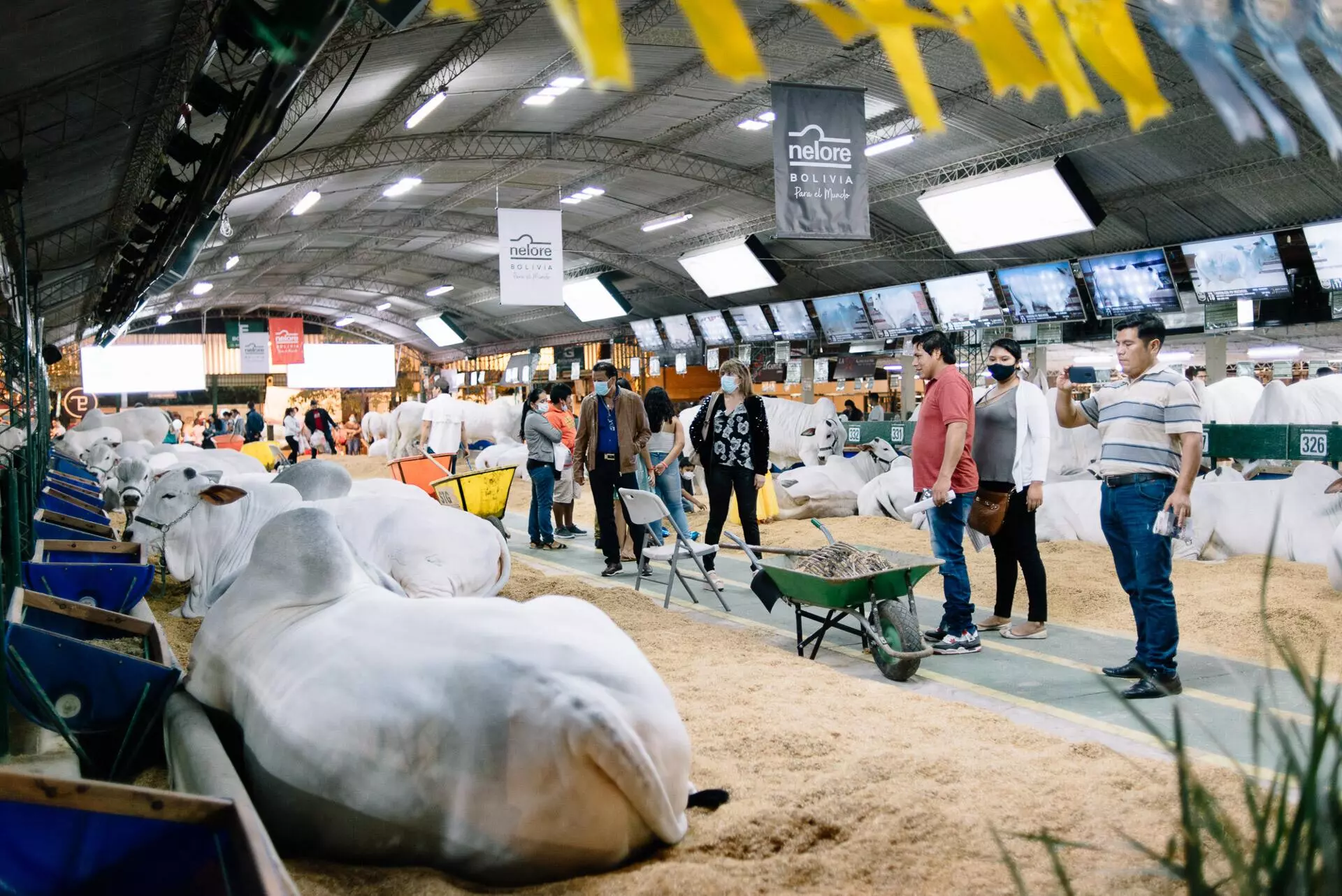
Sale of cattle at the ExpoCruz fair, the most important agribusiness event in the city of Santa Cruz de La Sierra (Bolivia)
Reggaeton and cumbia are blaring out, mingling in different corners of the esplanade: they set the rhythm for this stream of people who fill the food places and brightly lit bars, or browse the booths of the farmers’ stands and the Yamaha showroom with the latest model of tractor, or stop at the Marlboro stands, where hostesses with their faces plastered in thick make-up and fixed smiles hand out cigars and key chains.
But the most popular section, the one we’ve all come to see, is where the zebu are.
In those paddocks adorned with fluorescent signs there are parents strolling with their children, watching, touching those humpbacked beasts resting on piles of sawdust. A zebu weighs almost a ton, with marbled, brown, pearly skins that can cost as much as the minimum wage of 80 Bolivians combined.
“Touch his forehead, darling, he won’t do anything to you.”
A boy with the red balloon goes up to touch the ear of a zebu, which has a tag with the number 394 on it. And another young woman with glasses approaches and takes a selfie with calf 455. And further on, the guy pats calf 532 on the back. And the cattle sit there motionless, as if indifferent to the fleeting tenderness of humans.
These animals, of course, have not been bred to be eaten. They are animals that have been genetically enhanced so that the great mass of cattle, i.e. their offspring and their offspring’s offspring, provide the finest meat for export. This is explained by the breeders of Chorobí, Caldera Nesterlina, Nelorí, Cabaña Guajojó: members of the Bolivian Breeders Association; experts in “semen, embryos, wombs and breeding stock”. One of the breeders, Don Vladimir, explained to me that these specimens also exist to win competitions. Like Mr. Boyka —22 months old, Brahman breed, chocolate-coloured skin—, who this year took the title of Grand Champion of the whole fair.
“Son of champions, that Boyka. Excellent genetics,” Don Vladimir smiles proudly as he changes the wet sawdust of the winning male. “The judge said he had a good hump and good balls.”
Santa Cruz moves the big money tractor in Bolivia, and livestock is its fuel: this department alone concentrates 44% of the national cattle herd, 4.4 million heads that sustain the export of beef to Peru, Ecuador, Republic of Congo, Hong Kong, Vietnam and, above all, China: the Asian power alone consumes 85% of all meat production ‘made in Bolivia’.
This is good news for the GDP, but there is always the collateral damage, the impacts of the agricultural industry on the soil, water and air. Because although Bolivia has managed to get its meat onto the shelves in Chinese markets, in the last three years —which coincide with the start of exports to China in 2019— the figures for mega forest fires, loss of biodiversity, water pollution and greenhouse gas emissions have also skyrocketed, as we have seen, which only add fuel to the great fire of the climate crisis.
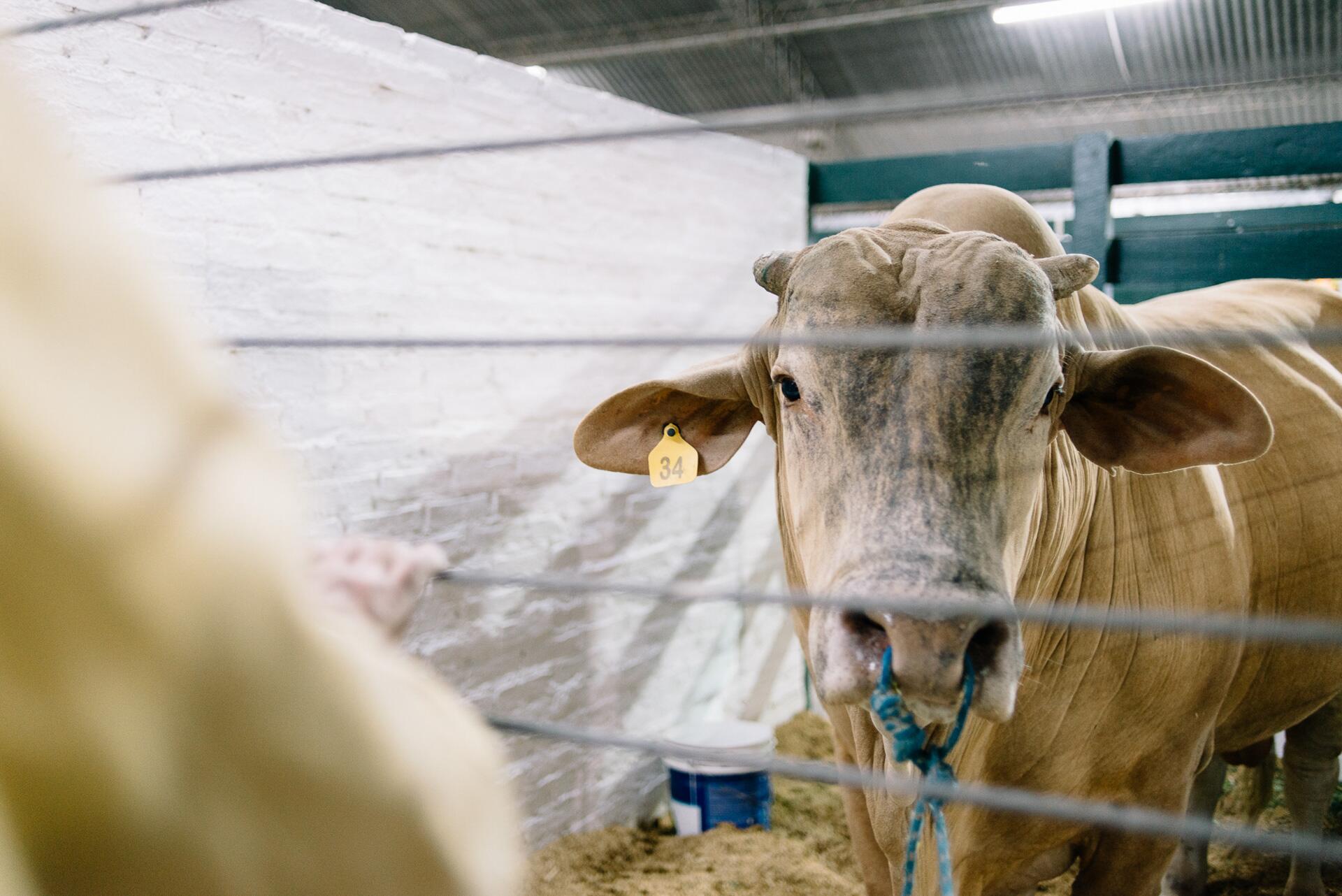
On that Saturday in September, ExpoCruz ended with a lavish day of celebrations. The fair was like an amusement park for livestock farmers
Let’s start with a well-known fact. According to the FAO, you need more than 3,000 gallons (15,000 liters) of fresh water to produce one kilo of beef. That’s 3,000 gallons that a zebu (Mr. Boyka, for example) will consume in his lifetime, including the water used to produce the fodder and cereals he is now chewing on. Let’s do the math: 3,000 gallons of water for 4.4 million Mr. Boykas. In a single department. You are welcome to calculate the figure for the whole country.
There are also the trees killed by steel and fire. The Authority of Fiscalization and Social Control of Forests and Land indicates that up to 80% of deforestation and fires in Bolivia are caused, mainly, “by the continued expansion of the agricultural frontier, land endowment by INRA [i.e., the State] in favor of rural, intercultural and indigenous communities, and to the new economic policies implemented to ensure food security in the country.”
In 2020, Bolivia had the third highest loss of tropical primary forests (after Brazil and the Congo) and had the second highest designation of forests for agro-extractive activities in Latin America, warns Global Forest Watch. 88% of these authorized clearings have been in Santa Cruz and 75% of these slash and burns were on private property. Anyone who wants to know more can read the pages and pages of data that record the damage, but one image is enough to reveal the double-edged sword of livestock progress: while in August 2019, the year of the fire, businessmen applauded with Evo Morales the first shipment of 48 tons of beef to China, the Chiquitano Dry Forest had been burning for two weeks. And it would continue to burn months later, until it became an incandescent wave that would leave thousands of hectares of pastureland and forest reduced to smoke and ash.
“Yeah, well, what can you do,” says Don Vladimir, the zebu breeder, who hopes that someday one of his sons will save up enough money to have his own herd. For now we have to be super careful with the burning, but we have to carry on. If not, well, all this is finished.”
***
That night when I arrived at ExpoCruz, before following the fire in Santa Monica, I met a couple of volunteer firefighters at the entrance. Joel and Matias, one 15 and the other 16: both wearing a uniform of khaki pants and yellow shirts. Their helmets, the color of the sun, bore an image of a jaguar’s head in the center. Standing upright like two trees that have not yet reached their full height, they looked a bit tired, but also expectant, holding their tins to collect donations.
They told me that they had not yet fought a fire, that they wanted to put one out soon, as soon as they finished their training. It all depended on people’s generosity filling their tins.
“At home they ask me why I want to go to the fires, if they don’t pay me. But it’s what I’m born to do, it’s my duty, isn’t it?”
Several hours later, when I left the fair, I saw them again. People were already on their way home, loaded with bags, food, colored balloons, with the music still playing from inside. While the firemen of the future were still standing, waiting for something in the same spot, tins in hand.
Joseph Zárate, Peruvian journalist and editor, received the Gabriel García Márquez Award in 2018 and the Ortega y Gasset Prize in 2016. He is the author of Wars of the Interior (Granta Books, 2018, tr. Annie McDermott), a non-fiction book about socio-environmental conflicts in the Amazon and the Andes. He lives in Lima.
This story is part of the Colapso project by Dromómanos, an independent news producer based in Mexico.
About Dromómanos
Dromómanos is a producer of independent journalism that investigates, educates and experiments to tell the story of Latin America in collaboration with journalists from all over the region. The project began in 2011, when its founders Alejandra S. Inzunza and José Luis Pardo Veiras traveled across the continent in a third-hand Volkswagen Pointer in a bid to forge a new journalistic model of continental coverage. Together they have created more than 20 long-form reportages and Narcoamérica, a book documenting the impact of drug trafficking on everyday life in societies throughout Latin America. In the past 12 years, Dromómanos has worked with over 100 contributors and partnered with 60 national and international media outlets to address the most pressing issues for Latin Americans, such as violence, the climate crisis, authoritarianism, migration and corruption.
About the Colapso project
What happens when the power of nature intersects with human suffering? In few places can one find a more striking answer to this question about our present and future than in Latin America, the most disparate and one of the most biodiverse regions in the world. Colapso (collapse) ventures deep into the jungles, mountains, islands, forests, deserts, oceans and cities of the region, to report from the field on the symptoms and consequences of the climate crisis.
Text: Joseph Zárate
Photos: Manuel Seoane
Fact check: Dromómanos
Spell check (portuguese): Valquiria Della Pozza
Translation into portuguese: Paulo Migliacci
English translation: Charlotte Coombe
Visual editing and page setup: Lela Beltrão and Érica Saboya
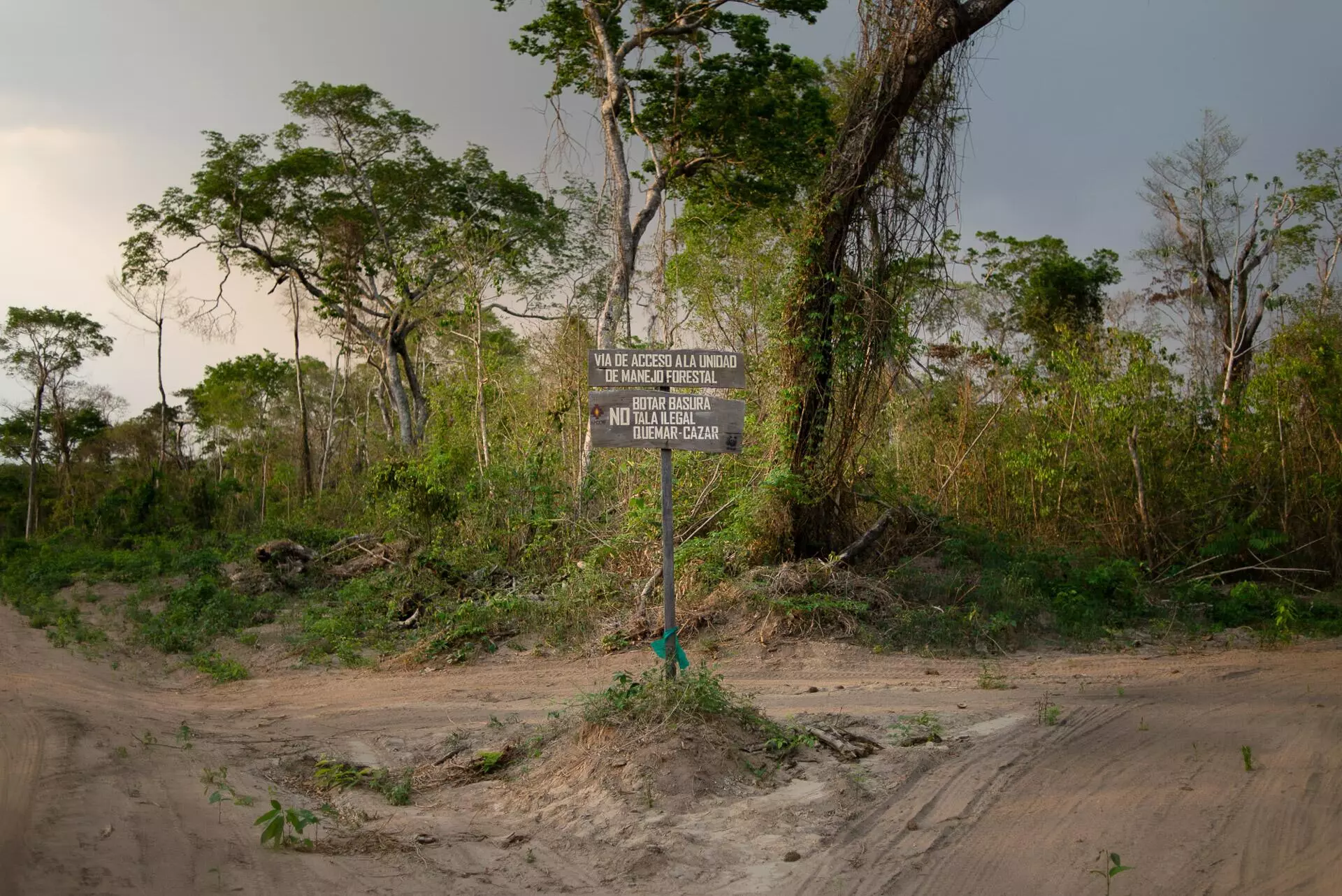
Sign at the entrance to a forest management area in Santa Mónica threatened by a nearby hot spot





